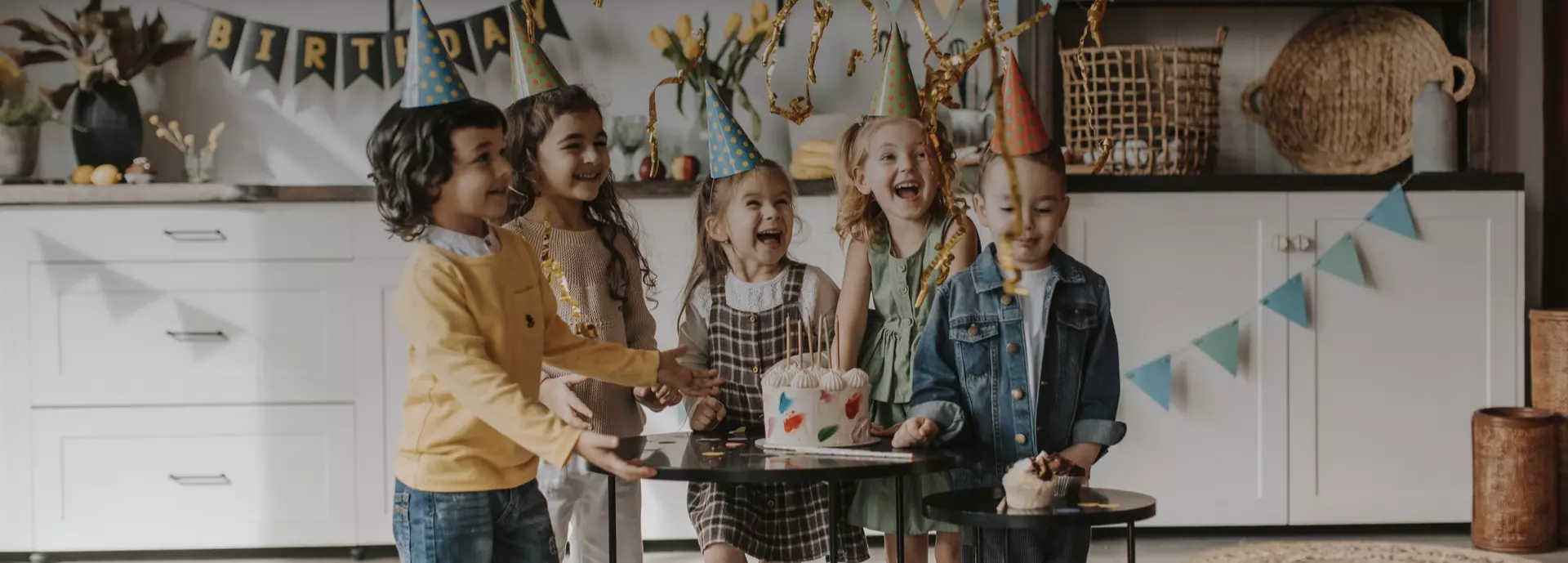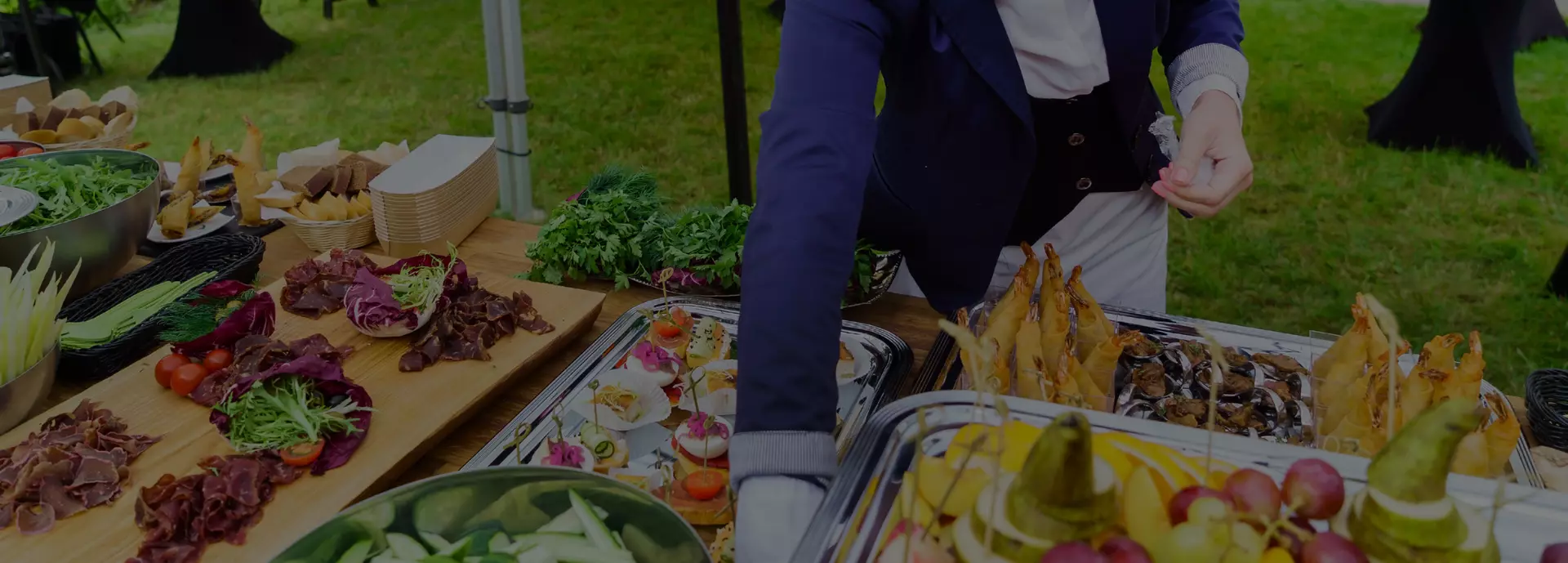How is a wedding in the USA celebrated
If you thought getting married in Russia was a stressful and expensive affair — wait until you learn about planning a wedding in the USA. That’s where the real surprises begin. An engagement party, two (!) separate weddings, five (!!!) rehearsals... To tie the knot, you may first have to sit through a heartfelt talk about sex with your own mother, attend countless boozy events, obtain a medical certificate, and spend several months nervously waiting for the big day. Intense? You haven’t even heard the half of it.
We’ve all seen American weddings in the movies, but watching them on screen doesn’t come close to showing just how massive the event really is. Read on to find out what it really takes to survive an American wedding — before, during, and after — and what you’re guaranteed to face if you're planning to get married stateside.
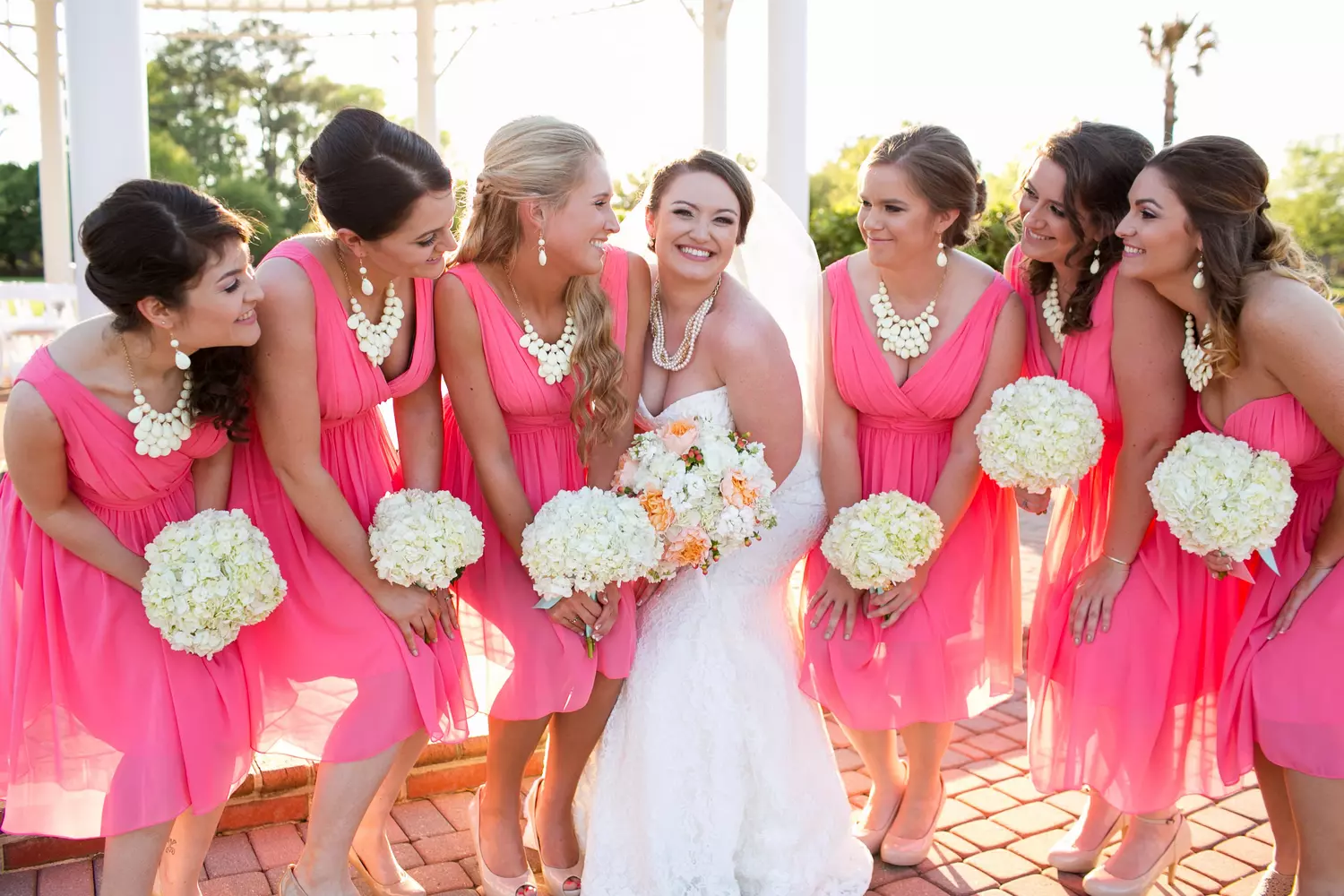
Engagement: Where It All Begins
The mindset of Russian-speaking cultures doesn’t always align with the American approach to pre-wedding events. For starters, Americans often celebrate both the engagement and the proposal separately. Since the time between engagement and the actual wedding can vary greatly, it’s common to throw at least one celebratory gathering — even a modest one — to unite the families. Of course, this doesn't guarantee that the couple won’t call off the engagement before making it to the altar.
- The Ring — Always
Without an engagement ring, the proposal isn’t considered official in the U.S. Traditionally, the man drops to one knee and pops the question — just like in the movies. - Surprise & Publicity
Americans love memorable proposals: on baseball fields, in restaurants, or on the beach. The goal is always the same — to create that “wow” moment and post it on Instagram. - Time Before the Wedding
The engagement period can last from a few months to a few years. It’s a time to plan and enjoy the status of being “engaged.”
Once the ring is on, the real journey begins. In most cases, couples go through two ceremonies — a legal (civil) wedding and a religious one. The latter isn’t mandatory, but tradition often demands it. And before either takes place, there are two more key events rooted deeply in Puritan values that still shape the American wedding culture today.
Bachelor & Bachelorette Parties
Traditionally, a bachelor party is a no-holds-barred night of drinking, strip clubs, questionable jokes, and the unspoken motto: “anything goes.” The ratio of alcohol to morally ambiguous company is expected to be dangerously high. Why? Because in Puritan-rooted tradition, once a man becomes a husband, he must live above reproach — no cheating, no wild behavior, no vices. So, the bachelor party is often viewed as the last hurrah — wild enough to make him never want to do it again.
The bachelorette party, or Bridal Shower, tends to be a tamer affair — at least in its traditional form. The term “shower” refers to the ‘showering’ of gifts: friends and female relatives of the bride gather to give her items symbolizing her new role — think lingerie, cookware, or household gadgets. But don’t be fooled — sometimes that shower includes champagne, and modern brides-to-be are more than happy to party just as hard as the men.
These events can range from heartwarming and hilarious to awkward or overly formal — it all depends on the people involved and their social circles. Either way, an American bachelorette party is practically a must. Historically, the tradition had a very practical purpose: properly raised Puritan girls knew little about what awaited them in marriage. These gatherings of friends and experienced women were meant to prepare the bride — mentally and emotionally — for what was once considered a shocking leap into adult life.

The Civil Ceremony
The civil ceremony in the U.S. can be extremely modest — or even skipped altogether. Legally, it consists of the couple visiting a designated government office, often at city hall, to submit the required paperwork. In some cases, medical certificates are also needed. Once approved, the couple is invited to a quick registration procedure, usually within an hour.
During the ceremony, the couple affirms their intent to marry and exchanges vows. Afterward, they are declared legally married, and the marriage certificate is usually mailed to them within a few days. That said, some opt for a more elaborate version — bringing the ceremony offsite and turning it into a full-blown wedding celebration.
For some couples, this is enough — the relationship is official, and that’s what matters. But they’re a minority. Only about 10–15% stop here. Even if you’re not particularly religious, chances are you’ll still go through a traditional wedding ceremony.
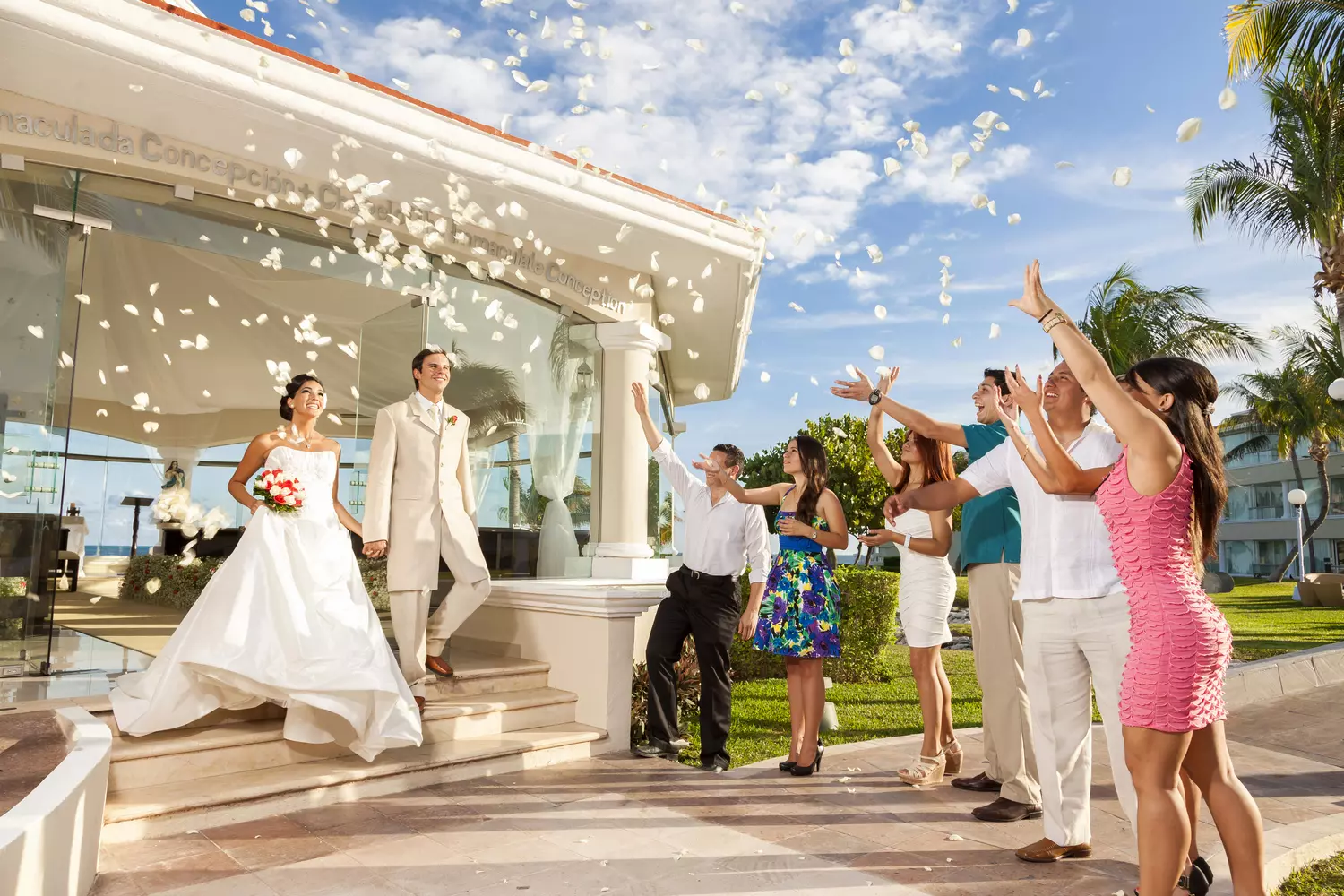
The Religious Wedding Ceremony
This is the iconic “wedding in a church” or outdoor ceremony we often see in Hollywood movies. First, the couple must select a date — religious ceremonies are typically held no sooner than 10–14 days after the civil registration. Often, they happen much later, and we’ll explain why in a moment.
The couple gets married in accordance with their faith tradition. Sometimes, traditional ceremonies — such as Catholic rites — are combined with more exotic customs, like Indian or Polynesian rituals, which are believed to bring “happily ever after” blessings to the couple.
What to Expect from the Ceremony
Here’s how a classic Catholic wedding — the most common format — typically unfolds:
- The groom waits at the altar while the bride is escorted down the aisle by her father, brother, or another close male relative.
- Both the bride and groom are accompanied by bridesmaids and groomsmen, with an equal number on each side. Their outfits are coordinated in style and color.
- Standing beside the groom is usually his brother or best friend; next to the bride is the maid of honor, who assists throughout the day.
- The vows exchanged at the altar are often written by the couple themselves in advance.
- The priest delivers a brief sermon before the exchange of rings.
- The wedding bands are placed on the left-hand ring fingers.
- If the ceremony is held in a church, the newlyweds are the first to exit and head to the reception venue.
Typically, the religious ceremony is the highlight of the celebration, involving guests, a festive meal, and entertainment. Most weddings during the warmer months are held outdoors, combining tradition with natural beauty.
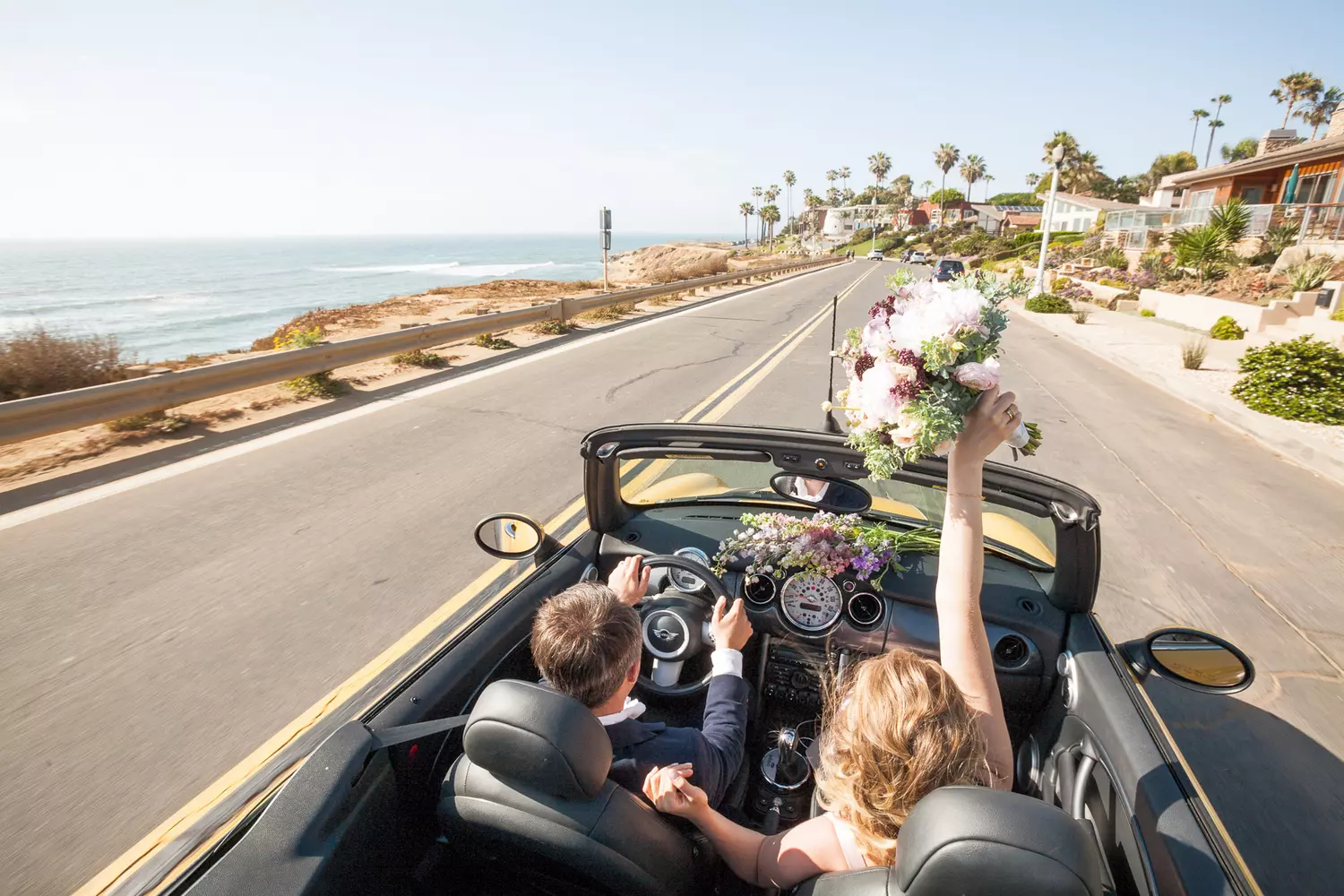
“An American wedding is a celebration meant to be shared — but one that will always remain uniquely yours.”
Wedding Rehearsals
Now, let’s talk about why many American weddings take place several months after the civil ceremony.
In the U.S., wedding rehearsals are taken very seriously. The entire event is run through multiple times, step by step — like a theatrical production. These rehearsals typically include close friends and family, and cover every detail: walking down the aisle, reciting vows, the first dance, trying on outfits, and even testing out tablecloths and seating arrangements.
On average, a wedding is rehearsed 2 to 5 times. The effort — both financial and emotional — is significant. That’s why it’s almost impossible to have a full-scale wedding with guests immediately after the civil ceremony. It takes time, planning, and lots of preparation to get everything just right.
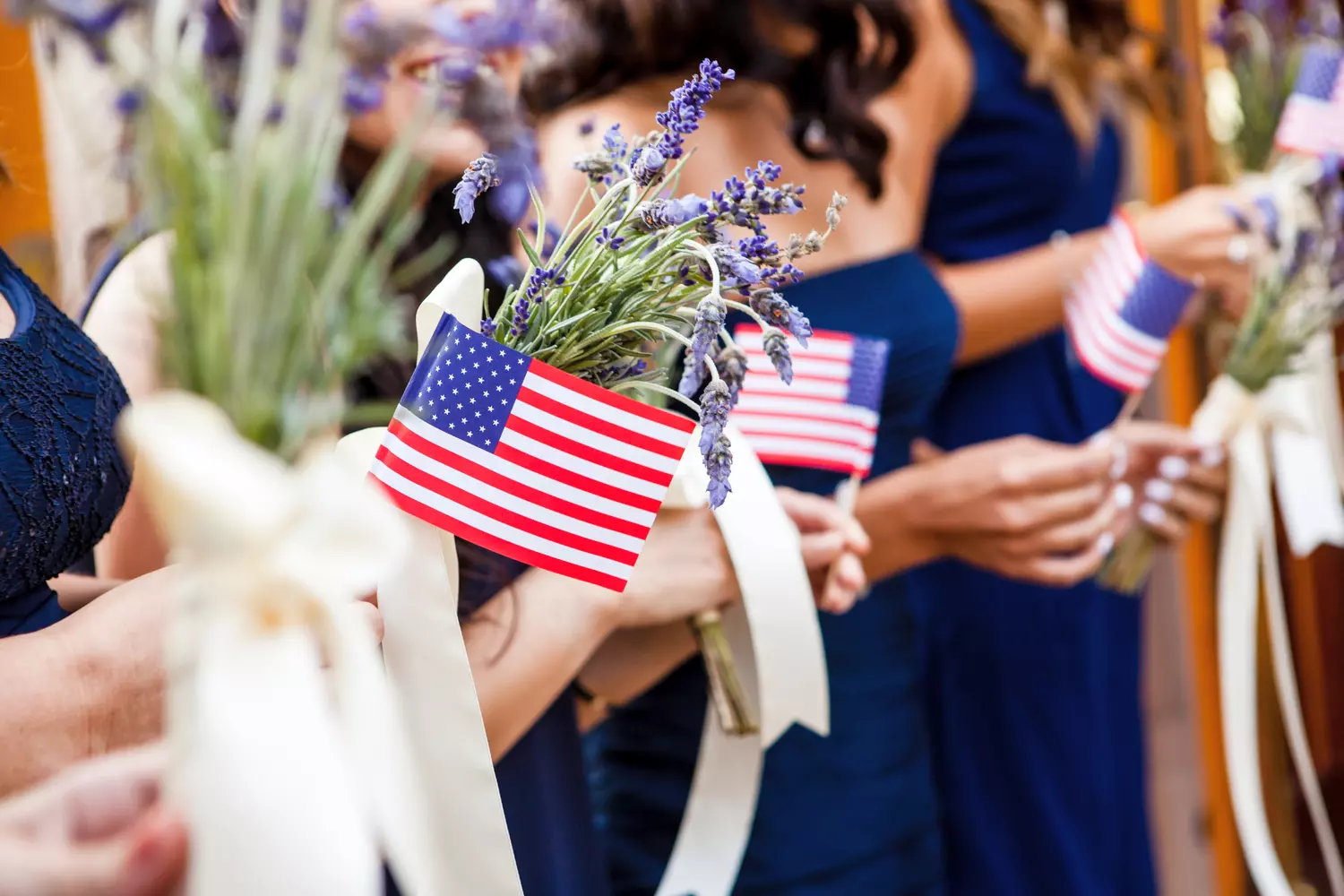
Timeless Traditions
- Something old, something new, something borrowed, something blue — an old English superstition that’s still cherished by American brides.
- Bouquet and garter toss — a playful tradition that symbolizes the passing of the “next in line to marry” torch and adds fun to the celebration.
- First Look — a private moment when the groom sees the bride in her wedding dress for the first time. Often captured as an emotional photo or video highlight.
The Honeymoon: A Must-Have
After the big day, newlyweds usually head off on a honeymoon. The U.S. offers thousands of options — from the sunny beaches of Miami to the snowy peaks of Colorado. And yes, a custom hashtag is often created in advance to document the journey on social media.
The American Wedding: Personal & Public
Americans know how to make weddings unforgettable. And it’s not just about the budget — it’s about the intention behind every detail, from the invitations to the final dance. It’s a celebration of love, tradition, and the desire to create something truly meaningful.
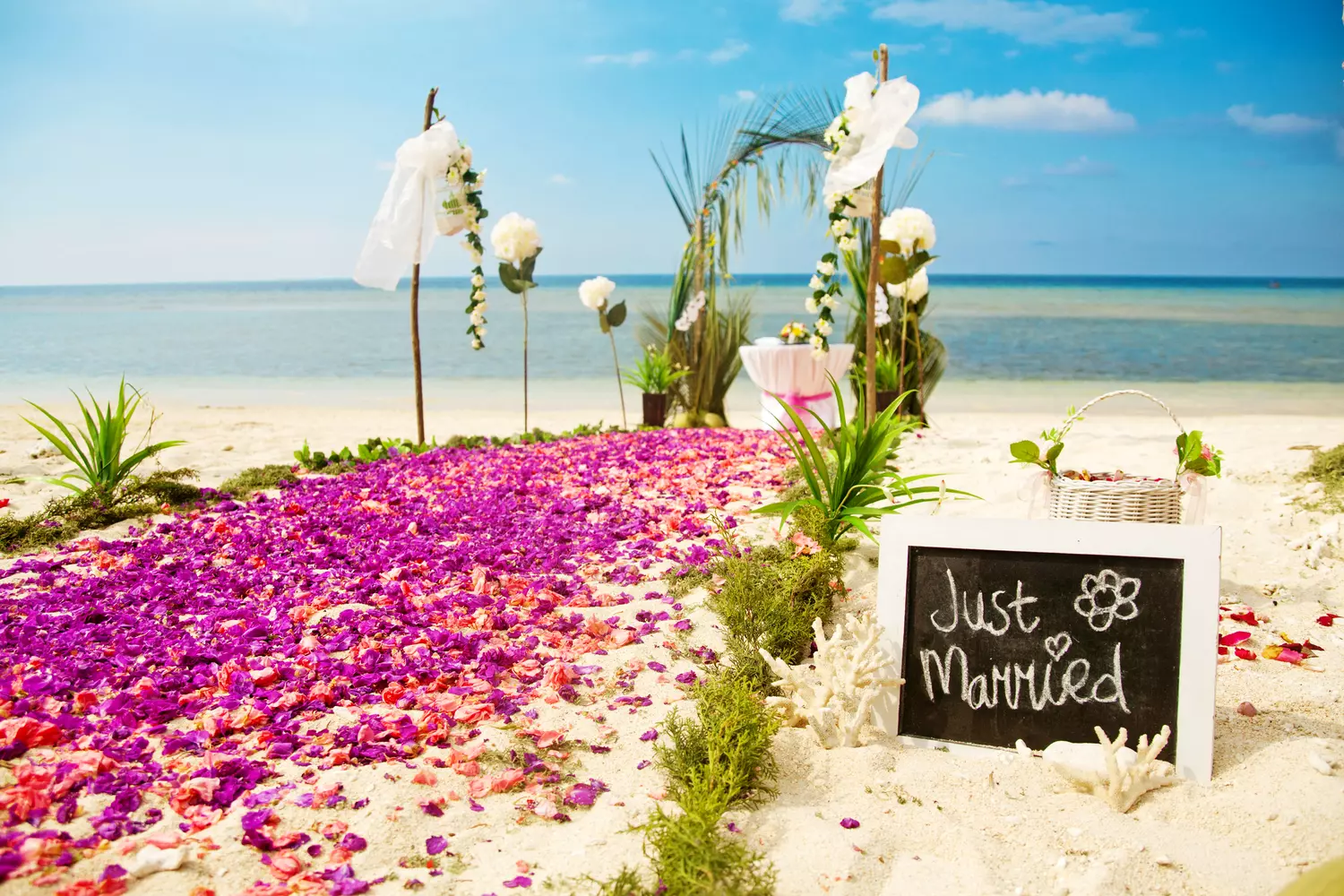
Planning a beautiful wedding is important — but preserving your peace of mind and love for your partner matters even more.
To help ease the stress, American Butler can take care of the logistics: we’ll suggest the best venues, restaurants, honeymoon options, and even handle transportation. Our goal is to ensure your celebration — no matter how new or unfamiliar the experience — feels effortless, joyful, and truly unforgettable.

































